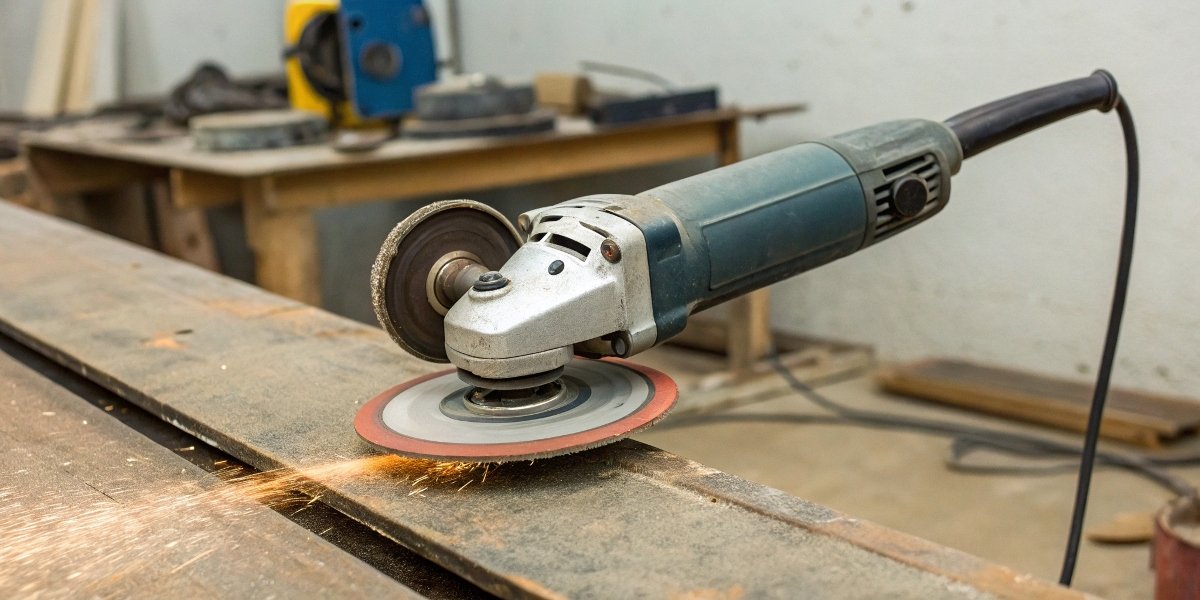
Are you confused by this powerful, versatile tool? You see it everywhere but are not sure what it does or if you need one. Getting it wrong can lead to costly mistakes.
An angle grinder is a handheld power tool that uses a rapidly spinning disc for cutting, grinding, and polishing. Its key feature is the gear head, which mounts the disc at a right angle to the motor, making it perfect for working on flat or contoured surfaces.
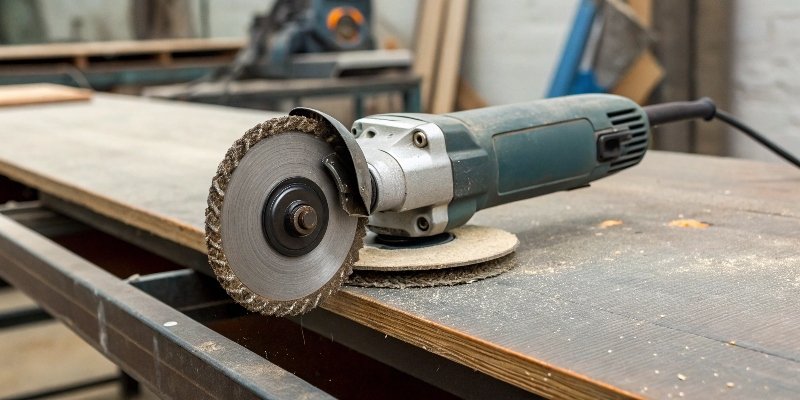
For nearly three decades, our factory in Henan has specialized in producing the very abrasive discs1 that make these tools work. We’ve seen firsthand how essential the angle grinder2 is in workshops around the world. It’s a true workhorse, but its power requires understanding. Many people only scratch the surface of what it can do, or worse, use it unsafely. Let’s explore this tool in more detail so you can use it effectively and choose the right accessories for your job.
What is an angle grinder used for?
Do you own an angle grinder but only use it for one task? You might be missing out on its full potential, leaving other tools to do a job it could handle better.
An angle grinder is mainly used for aggressive material removal and finishing. Its common applications include cutting metal pipes, grinding down weld seams, sharpening blades, removing rust or paint with a wire wheel, and polishing surfaces with special attachments. Its versatility makes it indispensable.
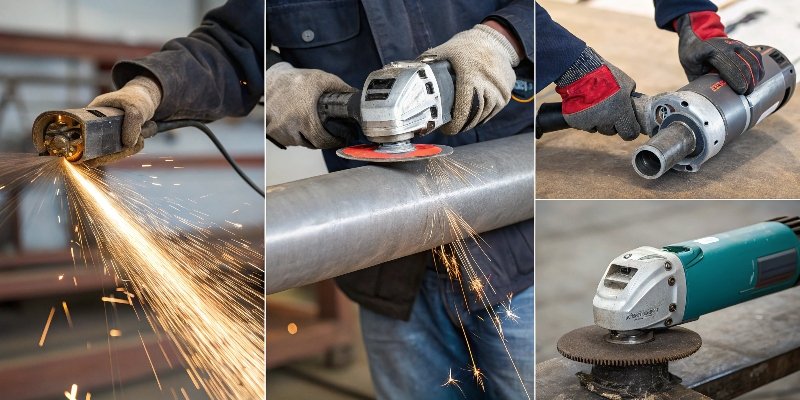
The true strength of an angle grinder comes from pairing it with the right disc. As a manufacturer, we produce a huge range of these discs because every job has unique demands. Using the wrong disc is inefficient and dangerous. For example, a thin cutting disc can shatter if you use it for grinding. A purchasing manager needs to know what applications their team needs to perform to source the correct, most cost-effective consumables. Let’s break down the primary uses and the discs they require.
| Task | Material | Recommended Disc/Attachment |
|---|---|---|
| Cutting | Metal, Rebar, Tile, Masonry | Abrasive Cut-Off Disc, Diamond Blade |
| Grinding | Metal, Concrete | Grinding Wheel, Grinding Cup |
| Cleaning | Metal | Wire Wheel, Wire Cup Brush |
| Sanding/Finishing | Metal, Wood | Flap Disc, Sanding Disc with Backing Pad |
| Sharpening | Metal Tools | Grinding Wheel |
Understanding this chart helps you see the angle grinder not as a single-function tool, but as a system. By stocking the right variety of discs, you can handle dozens of jobs with one power tool.
What is the difference between a grinder and an angle grinder?
Does the term "grinder" feel too general? You hear people talk about bench grinders and angle grinders, but you’re not sure which is which, leading to confusion when sourcing tools.
An angle grinder is a specific type of handheld grinder characterized by its cutting head being at a right angle to the motor. The general term "grinder" can also refer to other types, like bench grinders, which are stationary, or die grinders, which are smaller and pencil-shaped.
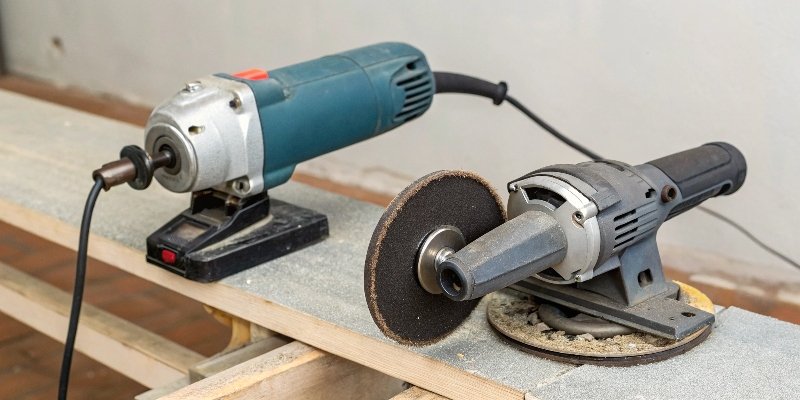
In our business, precision matters. Calling every tool a "grinder" is like calling every vehicle a "car." While technically true, it lacks the specifics needed for professional work. An angle grinder’s main advantage is its portability and the way its angled head allows you to work on surfaces in place. You bring the tool to the work. A bench grinder is the opposite; you bring the work to the tool. It’s bolted to a workbench for stability, making it ideal for shaping and sharpening small parts with two hands. A die grinder is for fine, detailed work in tight spaces.
Grinder Type Comparison
| Feature | Angle Grinder | Bench Grinder | Die Grinder |
|---|---|---|---|
| Mobility | High (Handheld) | None (Stationary) | High (Handheld) |
| Primary Use | Cutting, heavy grinding, polishing large surfaces | Sharpening tools, shaping small parts | Precision grinding, porting, deburring |
| Disc/Wheel Orientation | Perpendicular to the motor (at a right angle) | Parallel to the motor | In-line with the motor |
| Typical Power | High | Medium to High | Low to Medium |
As a buyer, knowing these differences ensures you equip your team with the right tool for the job, improving both efficiency and safety.
What is a grinding angle used for?
Are you getting rough finishes or dangerous kickback from your angle grinder? Using the wrong angle of attack can ruin your workpiece and create a serious safety hazard.
The angle at which you hold the grinder to the workpiece is critical. For grinding, use a shallow angle of 15 to 30 degrees for efficient material removal. For cutting, always use a 90-degree angle to prevent the disc from binding and shattering.
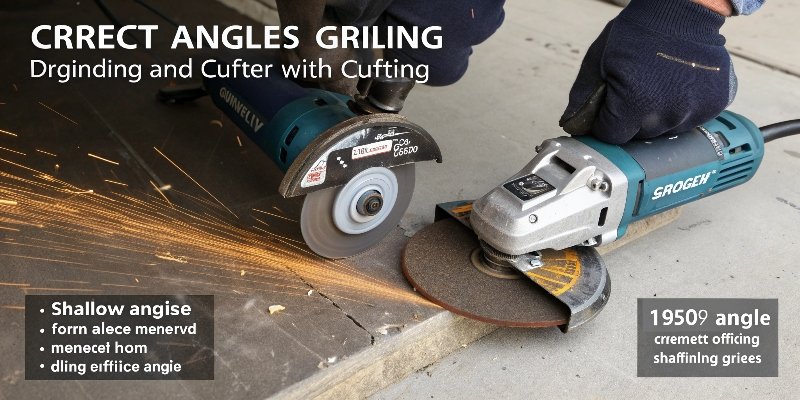
I remember visiting a client’s facility where they complained our grinding wheel3s were "wearing out too fast." When I observed their process, I saw operators holding the grinder almost flat against the metal. This puts all the pressure on the outer edge of the wheel, causing it to wear unevenly and work inefficiently. We corrected their technique to maintain a steady 15-degree angle, and the results changed instantly. The wheels lasted longer, and material was removed much faster. Correct technique is just as important as tool quality.
Angles for Specific Tasks
- Aggressive Grinding (15-30 degrees): When you need to remove a lot of material, like a weld bead, this angle is perfect. It uses a large surface area of the grinding wheel, which spreads out the heat and wear. This gives you maximum control and efficiency.
- Cutting (90 degrees): When using a thin cut-off disc, you must hold the tool perpendicular to the workpiece. This allows the disc to slice through the material cleanly. Angling the tool during a cut puts extreme sideways pressure on the disc, which is not what it was designed for. This is a leading cause of disc failure and injury.
- Finishing with Flap Discs (5-15 degrees): For a smooth finish, you want an even lighter touch. A flap disc, held at a very shallow angle, allows the abrasive flaps to blend the surface without digging in and creating gouges.
What is the function of a grinder?
Have you ever wondered how a simple spinning disc can cut through solid steel? Understanding the core principle behind a grinder helps you appreciate the technology and choose the right abrasive material.
The basic function of any grinder is to remove material using an abrasive. A motor spins a wheel or disc coated in hard mineral grains at very high speeds. These grains act like thousands of microscopic cutting tools, shearing or fracturing away the surface of the workpiece.
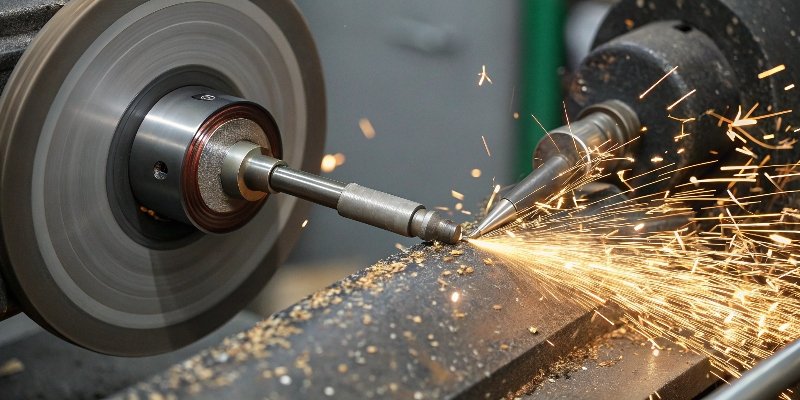
Here in Henan, we are at the heart of China’s abrasive industry. 80% of the nation’s diamonds for industrial use come from our province. We work with these materials every day. The "magic" of a grinder is all in the abrasive grains4. A grinder’s motor provides the speed, but the abrasive does the work. Whether it’s aluminum oxide, silicon carbide, or superhard diamond, the function is the same: to be harder than the material you are working on.
The Grinding Process Explained
- High-Speed Rotation: The tool’s motor spins the abrasive disc at thousands of RPM (Revolutions Per Minute). This speed is essential to allow the abrasive grains to cut effectively and to eject the removed material (swarf).
- Abrasive Action: Each tiny, sharp grain on the disc makes contact with the workpiece. It either cuts a microscopic chip from a ductile material like metal or causes a micro-fracture in a brittle material like stone or concrete.
- Material Removal: This process repeats thousands of times per second, resulting in the rapid removal of material that we see as grinding, cutting, or sanding. The bonding agent that holds the grains together is designed to slowly wear away, exposing new, sharp grains to continue the work efficiently.
Choosing the right grain type for your material is the key to performance, and it’s our area of expertise.
Conclusion
The angle grinder is a powerful and versatile tool for cutting, grinding, and finishing. Understanding its function, uses, and proper technique ensures you can work safely and efficiently.
-
Discover the different types of abrasive discs and their specific applications for angle grinders. ↩
-
Explore this link to understand the mechanics and benefits of using an angle grinder effectively. ↩
-
Learn about grinding wheels, their types, and how they function in grinding applications. ↩
-
Understand the role of abrasive grains in grinding and their impact on performance. ↩
Written by
leeon
You may also be interested in:
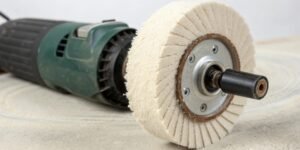
What is a buffing wheel used for?
Dull, scratched surfaces can ruin your products. This costs time and money. A buffing wheel is your tool to restore that perfect, professional finish everyone
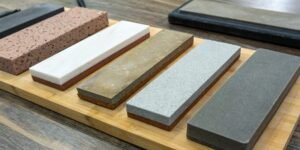
What is the best type of sharpening stone for kitchen knives?
Your kitchen knives are getting dull, making simple tasks like slicing a tomato a frustrating chore. A dull knife is a dangerous knife, but choosing
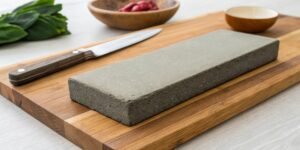
What is a good sharpening stone for my knives?
A dull knife is frustrating and can be unsafe. But with so many sharpening stones available, choosing the right one feels overwhelming. I will help
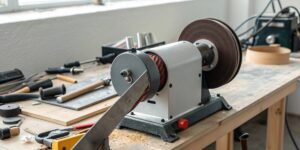
What belt grinder should a (beginner) knife maker own?
Starting knife making is exciting, but choosing the right grinder is overwhelming. The wrong one ruins projects and wastes money. This guide simplifies picking the

How do you cut welds with a grinder?
You have a rough weld that needs removing, but you’re worried about damaging the metal or getting hurt. Using an angle grinder correctly is the
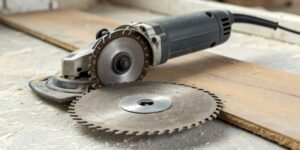
Can I put a circular saw blade on a grinder?
You need to make a quick cut, and your angle grinder is right there. It’s tempting to try and fit a saw blade on it.
